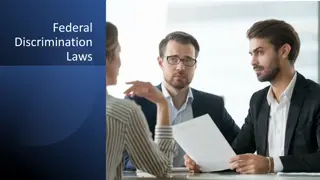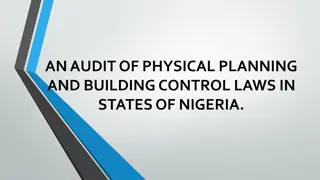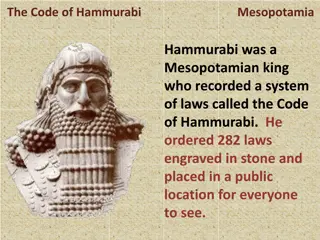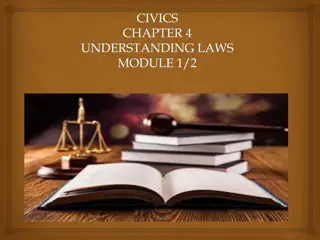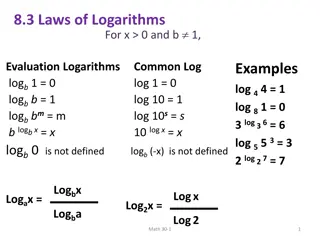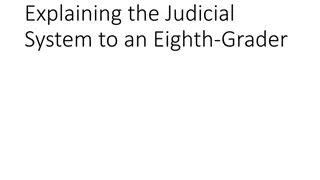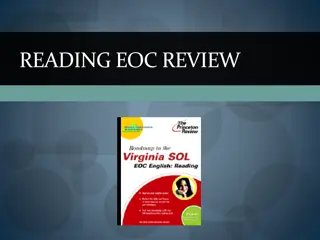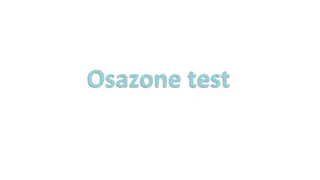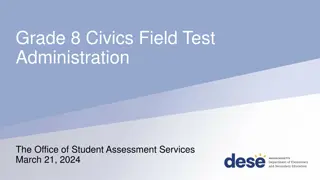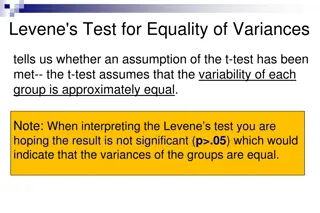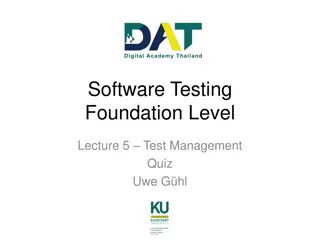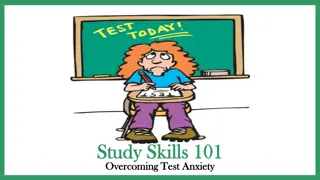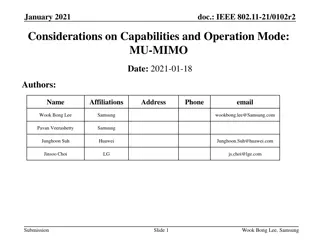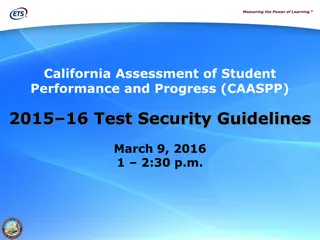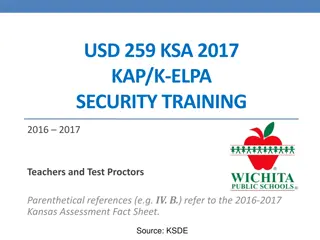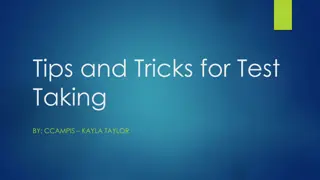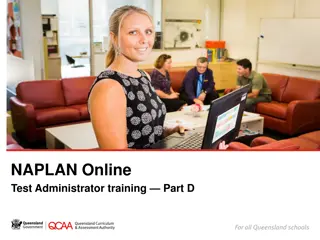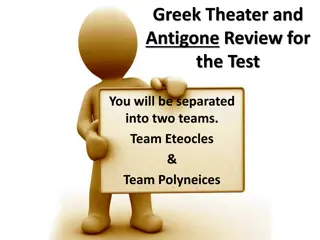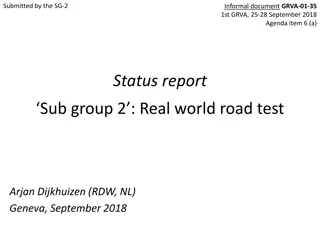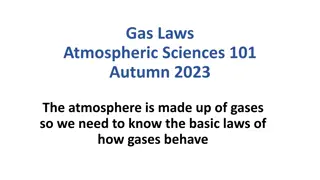Newton's Laws Test Review
Explore and review key concepts of Newton's laws of motion through a series of test questions and scenarios. Topics covered include acceleration, forces, velocity, and more. Test your understanding and knowledge in this interactive review.
Download Presentation

Please find below an Image/Link to download the presentation.
The content on the website is provided AS IS for your information and personal use only. It may not be sold, licensed, or shared on other websites without obtaining consent from the author. Download presentation by click this link. If you encounter any issues during the download, it is possible that the publisher has removed the file from their server.
E N D
Presentation Transcript
NEWTONS LAWS TEST REVIEW
1 A motorcycle traveling 35 mi/hr slows as it approaches a stop sign. This is an example of a) acceleration b) distance c) speed d) velocity
2 A released balloon flies across the room. The balloon slows down as the forces become a) balanced b) frictional c) restricted d) unbalanced
3 A bike racer travels 17 mi/hr in a southerly direction. This is an example of a) distance b) speed c) velocity d) acceleration
4 The net force of balanced force pairs is ____. a. positive. b. negative. c. either positive or negative. d. zero
Between which two locations would the greatest change in speed most likely occur? a) Between S and T b) Between T and U c) Between U and X d) Between T and X
6 What force is necessary to accelerate a 1,250 kg car at a rate of 40 m/s2? a. 31.25 N b. 40.0 N c. 1,250 N d. 50,000 N
Segment Segment During a race, runners . . . During a race, runners . . . . . . wait at the starting line for the starter s signal. A . . . speed up on the straight section of the track. B . . . change direction as they round the corner of the track. C . . . slow down after they cross the finish line. D Based on the observations, the runners do not accelerate during a) Segment A b) Segments A and C c) Segments B and C d) Segments C and D
8 30 N left 50 N right What is the net force acting on the object? 20 N right 20 N right Are the forces balanced or unbalanced? unbalanced unbalanced
9 How does Newton s first law of motion apply to a ball rolling across the gym floor after an unbalanced force is applied? a) The ball will stop at the line halfway across the gym. b) The ball will continue to roll until an unbalanced force is applied. c) The ball will start bouncing until it hits the wall. d) The ball will roll in a zigzag pattern to the other end of the gym.
10 The law requires all people riding in a car to wear seat belts. If the car suddenly stops, the seat belts hold the passengers in place. How does Newton s first law of motion apply when a person is not wearing a seat belt? a) A The passengers will continue moving forward due to inertia. B The passengers will move backward into the seat. C The passengers will lean into another passenger s seat. D The passengers will not be affected by the sudden stop of the car. b) c) d)
11 When the air is released from a balloon, the air moves out one end and the balloon moves in the other direction. Which statement does this situation best illustrate? A What goes up must come down. B For every action there is an equal and opposite reaction. C The shape and size of an object affect air resistance. D The acceleration due to Earth s gravity is 9.8 m/s2.
12 Which of these statements best describes the action- reaction force needed to launch a space shuttle? a) The ground pushes up on the rocket when exhaust gases push down on the ground. b) Exhaust gases push down on air, while the ground pushes up on the rocket. c) The rocket pushes exhaust gases down, while the exhaust gases push the rocket up. d) Gravity pulls the rocket exhaust down, while friction pushes up against the atmosphere.
OBJECT OBJECT MASS (g) MASS (g) VOLUME VOLUME (cm3) (cm3) X 38 32 Y 36 19 Z 21 35 If a force of 50 N is applied to each of the three objects, which one will have the least acceleration? a) Object X, because it has the greatest mass b) Object Y, because it has the least volume c) Object Z, because it has the least mass d) Object Z, because it has the greatest volume
How much force is needed to accelerate a 3 kg toy car at a rate of 1.5 m/s2? F = M x A F = 3kg x 1.5m/s2 F= 4.5 N





